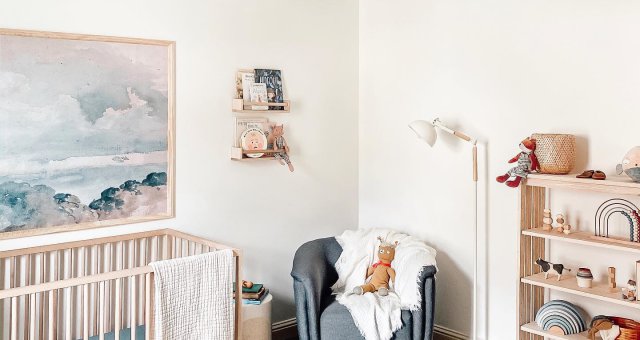Ah, sleep. That natural, elusive thing we all want a little more of. Most people think the secret to sleep is simply nabbing a solid eight hours of it every day. But there is actually a lot more that goes into waking up refreshed and ready to tackle your day. Learning how to sleep better can reap many rewards for you. And it all starts with the fundamentals: a comfortable bedroom environment that encourages deep sleeping, not entertainment. Turning down the lights, eliminating blue light, and using white noise machines are all time-tested ways of defeating insomnia. But there is more you need to know if you want to truly maximize your slumber time. And you can find everything you need to create a coherent and stylish approach to sleep here at Ashley.
How To Choose The Right Bed
You can use every sleep trick in the book, but if you don’t have the right bed for your needs, you will not wake up feeling as refreshed as you should. A comfortable bed supports your body so your mind can drift off peacefully. Worn-out mattresses and lumpy pillows do little to encourage good sleeping habits, even when they’re covered in the very best sheets. Even the bed frame itself could be affecting your sleep habits without you realizing it. Focus on choosing the best mattress, pillow, and bed linens to support your efforts for better sleep without requiring multiple trips to the sleep shop.
How to Choose Pillows
The pillow is often overlooked as a mere accessory compared to the rest of the bed. But without proper support for your head and neck, you’re not doing all you can to support good sleep practices. Learning how to choose a pillow starts with considering what position you sleep in most often. Bed pillows are generally designed to best support only one or two positions. Choosing a pillow is always a matter of trying to create a straight line between your head, neck, and shoulders. If you sleep on your back, you’ll need a thinner pillow to achieve this. A standard polyfill pillow should work fine.
Side and stomach sleepers need more cushioning to keep their head and neck in alignment all night long. Side sleepers generally need the most support, while stomach sleepers may be able to use a pillow that’s also designed for back sleeping. Memory foam, dense fill, and buckwheat are all good fill options for side sleeping pillows. They provide more support and won’t shift out of the way as you sleep, causing alignment issues that wake you up or leave you sore in the morning. Another question to ask about how to choose the right pillow is whether you have allergies or not. A hypoallergenic pillow—or at least a case designed for that purpose—can reduce allergy issues that interrupt sleep.
How to Choose Bed Sheets
After you pick your perfect pillow, consider the sheets covering your bed. Learning how to choose bed linen options is largely a matter of knowing your own preferences. If you’re sleeping in sheets that are too warm, too scratchy, or too thick for your bed, you may wake up multiple times a night without realizing it. Sheet sets are generally designed for either winter or summer use based on their material and thread count. Thinner sets have become mistakenly associated with lower quality. A low thread count sheet can still offer a “soft hand,” which is the term for the texture of the fabric. They can also provide better airflow to prevent overheating on warm summer nights. Crisp and thick sheets are often preferred for winter, as they provide extra warmth.
Cotton is a classic for bed linens, famous for its absorbency and lightweight summer-friendly feel. Linen is another good option for summer. Over the winter, you may find artificial fibers like polyester microfiber more comfortable thanks to the heat-trapping power of the material. That is also what can make them uncomfortably hot in the summer. Bamboo and silk work well in all seasons, making them an excellent choice for anyone overwhelmed by all the choices. Your personal qualifiers for how to choose bed sheets may change over time as you get experienced with different materials.
Get Better Sleep With These Products
Many accessories to improve your sleeping experience are little more than gimmicks. However, some products actually have a good chance of improving your sleep experience. One trick for learning how to get better sleep is keeping the space as dark as possible. Recent studies show that even slight light exposure can make a big difference in sleep quality. Blackout curtains and sleep masks can help eliminate lighting issues you can’t just switch off yourself.
Another issue common to people struggling with insomnia is a warm bedroom. Cooler-than-usual temperatures encourage deep sleep and keep you from waking in the middle of the night. Cooling pads spread out under your sheet set is a fast way to make a difference, in addition to using a fan or turning up the A/C. Bed cooling systems that blow air under the sheets may look fancy, but they often receive mixed reviews. Passive methods like heat diffusing pads are much more likely to produce the desired results without increasing your electrical use.
Mattresses to Help You Catch Some ZZZs
Before you pick a supportive mattress to keep you asleep, consider how to choose a bed frame. Bed frames that wiggle around or squeak when you roll over will only interrupt your sleep and keep you awake. Aside from these distractions, the choice of how to choose a bed is largely up to you. It’s the mattress that provides the majority of the sleep experience.
Look for a firm mattress on coiled springs if you’re a back sleeper. Softer memory foam and gel mattresses work best for side sleepers so their hips don’t rest uncomfortably against springs. The more you weigh, the firmer the mattress should be to prevent sagging when your back needs support.
Get the sleep you’re looking for with the help of Ashley. Our sleep shop is packed with all the equipment and accessories you need to make your bedroom into a sanctuary of stylish restoration.





